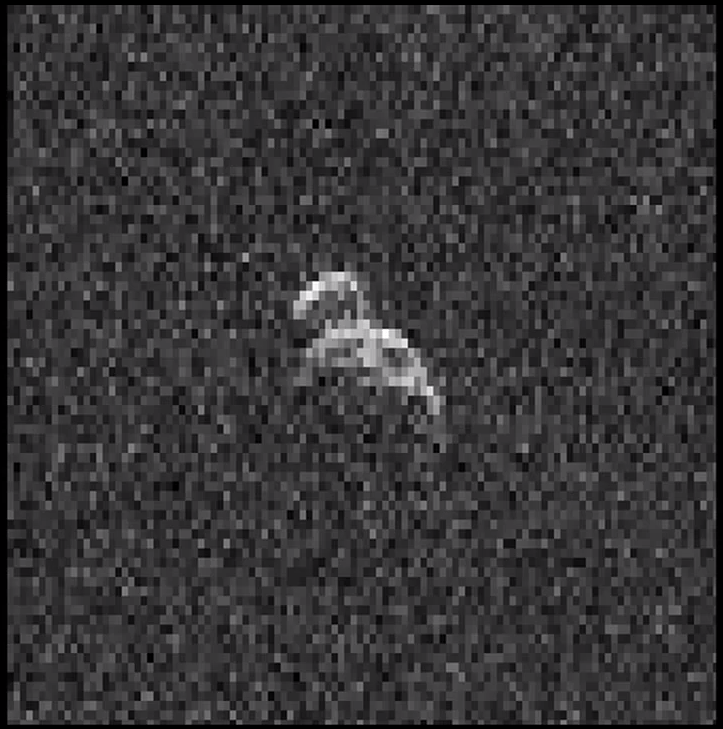Huge Peanut-Shaped Asteroid Buzzes Earth in NASA Video

A large asteroid shaped like a cosmic peanut zipped safely by Earth this month, and a new NASA video retells the entire space rock encounter as it happened using impressive radar images.
Scientists using NASA's Deep Space Network Goldstone antenna in California tracked the near-Earth asteroid 2006 DP14 using radar imaging as the space rock passed within 2.6 million miles (4.2 million kilometers) of our planet on Feb. 12. The new radar images show that 2006 DP14 is about 1,300 feet long (400 meters) and 660 feet wide (200 m). NASA created a video of asteroid 2006 DP14's Earth flyby with the Goldstone radar images.
The asteroid is known as a "contact binary" because the two halves of its peanut shape seem to be touching and moving through space together. 2006 DP14 made its closest approach to Earth on Feb. 10 when it traveled about 1.5 million miles (2.4 million km) from the planet's surface, NASA officials said. Scientists then observed the asteroid on Feb. 12 from 12:03 a.m. EST to 2:27 a.m. EST (0503 GMT to 0727 GMT). [See photos of potentially dangerous asteroids]
"Radar is a powerful technique for studying an asteroid's size, shape, rotation state, surface features and surface roughness, and for improving the calculation of asteroid orbits," NASA representatives wrote in a statement. "Radar measurements of asteroid distances and velocities often enable computation of asteroid orbits much further into the future than if radar observations weren't available."
Earlier studies have shown that about 10 percent of near-Earth asteroids larger than 650 feet (200 m) have contact binary shapes, NASA officials said.
Comets and asteroids are considered near-Earth objects (NEOs) of they fly within about 28 million miles (45 million km) of Earth's orbital distance, NASA officials have said.
So far, scientists have found more than 90 percent of NEOs larger than 0.6 miles (1 km) in size. These huge space rocks could create global problems if one impacted Earth, but none of these catalogued NEOs seems to be on a trajectory that would lead it to smack into the planet.
Breaking space news, the latest updates on rocket launches, skywatching events and more!
"In addition to the resources NASA puts into understanding asteroids, it also partners with other U.S. government agencies, university-based astronomers, and space science institutes across the country that are working to track and understand these objects better, often with grants, interagency transfers and other contracts from NASA," NASA officials said.
Follow Miriam Kramer @mirikramer and Google+. Follow us @Spacedotcom, Facebook and Google+. Original article on Space.com.

Miriam Kramer joined Space.com as a Staff Writer in December 2012. Since then, she has floated in weightlessness on a zero-gravity flight, felt the pull of 4-Gs in a trainer aircraft and watched rockets soar into space from Florida and Virginia. She also served as Space.com's lead space entertainment reporter, and enjoys all aspects of space news, astronomy and commercial spaceflight. Miriam has also presented space stories during live interviews with Fox News and other TV and radio outlets. She originally hails from Knoxville, Tennessee where she and her family would take trips to dark spots on the outskirts of town to watch meteor showers every year. She loves to travel and one day hopes to see the northern lights in person. Miriam is currently a space reporter with Axios, writing the Axios Space newsletter. You can follow Miriam on Twitter.

